
views
X
Research source
If you want to reduce your bail, then you need to file a document with the court (called a “motion”) and then prepare for the hearing.
Building Your Argument
Know what to expect. Most jails have a bail schedule which specifies bail amounts for common crimes. If you want your bail reduced, however, you will need to ask a judge to lower it. Your first arraignment usually takes place within 24 to 48 hours of the arrest. The court will advise you of your rights and set bail at this initial appearance, and your lawyer can make an argument about your bail. Depending on your state, your lawyer may, at this point, be able to ask for a lower bail or for you to be released on your own recognizance (OR, which will be discussed later). If you get an unfavorable ruling in regards to your bail, you can file a motion to get bail reduced. If you file a motion for reduced bail, this will be addressed at a second arraignment or a special bail hearing. This is when your lawyer can submit evidence or even call witnesses to show that you are not a flight risk and will show up for subsequent court dates.

Get a lawyer. As a criminal defendant, you should have a lawyer who can represent you. A lawyer will understand what factors a judge considers most important when deciding whether to reduce bail. Also, many judges take arguments more seriously when they are made by a lawyer. If you don’t have money to afford your own lawyer, then ask the court for a public defender. The judge should ask you at your arraignment or earlier whether or not you have a lawyer and if you want a public defender. You will have to fill out an application for a public defender. The application typically asks that you provide information about your finances. Hold onto a copy of this document because you will need to provide financial information if you want to reduce your bail.

Identify the factors a judge will consider. Each state has a general set of guidelines for determining whether to reduce bail. Although each state’s law is slightly different, a judge will generally consider the following factors: You don’t pose a danger to the community. The court will look at the seriousness of your offense to judge whether releasing you would put the community at risk. You have no prior criminal record. The cleaner your criminal record, the better. Also, you should ideally not have any citations for skipping court hearings in the past. You have a job in the community. You have family in the community. Family ties are an important sign that you will not skip town before trial. You have lived in the area a long time. The longer you have lived in a community, the less likely it is that you will disappear if you are given bail.

Find documentary evidence in support of your argument. You can help your lawyer build a strong argument for reducing bail by giving them helpful evidence. You should find the following documents: Give your attorney pay stubs and W-2 or tax forms that show regular employment in the area. Find property tax records or utility bills that show how long you have lived in the community.
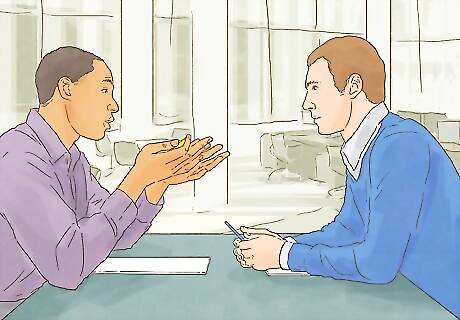
Ask people to testify on your behalf. You can usually have witnesses testify at your bail hearing. You should identify witnesses with helpful information ahead of time. Look again at the factors a judge considers when determining whether to reduce bail. Check if there are people who can testify. For example, you could have your spouse testify as to how long you have been married and how long you have lived in the community. Your boss could testify as to how long you have held your job.

Identify what you can afford. Before asking the judge to reduce your bail, you should figure out what you can afford. Pool all available resources and figure out what is the most you can post. You can often post a “bond” for the amount of the bail. To get the bond, you pay 10% of the amount of the bond. This amount is not refunded to you at the end of the trial; however, you could post a bond for $10,000 by paying only $1,000. You could also try to get “released on your own recognizance.” This means that you promise, in writing, to show up to trial but you don’t have to post any bail; however, you may have to periodically check in with the court or promise not to leave the county.
Filing a Motion

Get a form. Your lawyer should handle drafting the motion for you. They can send you a copy after it is completed for you to read. If, for some reason, you don’t have a lawyer, then you will need to draft your own motion. Check to see if the court has a form you can fill out. Some courts also have administrative procedures for reducing bail. For example, there may be a “bail services” department. You will have to get the form from this department.

Format a simple motion instead. If no form is available, then you will need to draft a motion. A motion is a document you file to ask the judge to do something. Here, you want the judge to reduce your bail. You can start typing up your own motion by opening a blank word processing document. Set the font to 14 point Times New Roman or Arial. Also make the document double-spaced.
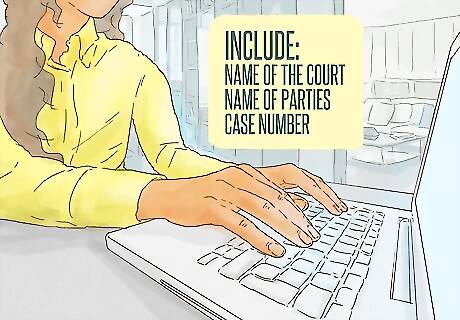
Insert the caption. Each motion filed in your case has the same information at the top of the first page. This is called the “caption.” You should look at any document filed and get this information. For example, the indictment could have this information at the top. The caption includes: Name of the court Names of the parties (typically “People v. [Your Last Name]” or “State v. [Your Last Name].” If there were multiple defendants, then there may be more than one name. The case number
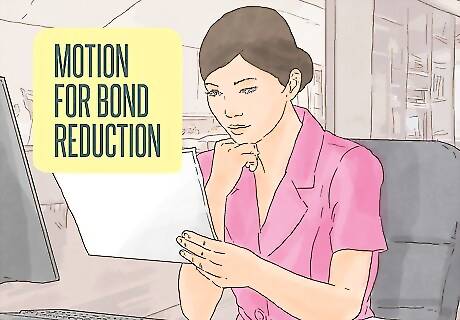
Title the motion. The title will vary, depending on the court you are appearing before. Generally, you can title it “Motion for Bond Reduction.” The title should be inserted underneath the caption and put in all caps, bolded.

Give the judge the facts. You should start off the motion by introducing yourself and then telling the judge key facts, such as the charges filed against you and the amount of bail. Also tell the judge that you are bringing the motion because you can’t afford the bail and want a reduction. You could type: “Defendant, Jonah Thomas, representing himself pro se, hereby requests this Court reduce Defendant’s bond. As grounds for relief, Defendant states as follows….” Always refer to yourself in the third person. Then include details about the charges and the amount of bail: “Defendant has been charged with robbery, [insert the statute, which you can find by looking at your indictment]. At an initial appearance, this Court set bond at $10,000, which Defendant has not been able to post.”

Explain why you are entitled to bail. You should go down through the factors a judge will consider and explain how they support your argument that your bail reduced or that you should be released on your own recognizance. Remember not to lie or stretch the truth. If you do, you will not get your bail reduced and you could face additional punishment. You could write: “Defendant should be released on his own recognizance because he is not a flight risk. Defendant has lived in this community for 12 years, and has worked in the same job at Quick-Mart since 2007, where he is a full-time janitor. Defendant’s ties to the community are also strong: he has lived in the same home with his wife, Evelyn, since moving to the community. Their two children attend the elementary school. Defendant has no previous criminal record other than a DUI from 1999. Furthermore, because the crime charged is not a crime of violence, Defendant is not a danger to the community.”
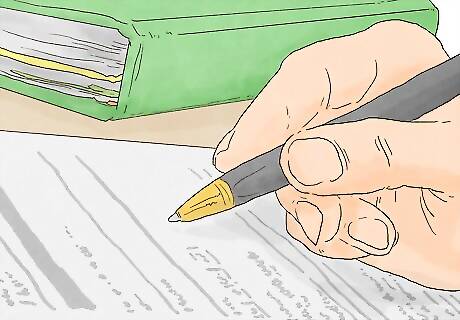
Conclude the motion. In conclusion, state what you want the judge to do. Remember to include your signature beneath the conclusion, along with the date. If you don’t sign your motion, then the judge won’t consider it. Sample language: “Wherefore, Defendant Jonah Thomas requests that this Court reduce his bail and order him released on his own recognizance.”

Attach a certificate of service. You need to tell the court that you sent a copy of the motion to the prosecutor, so that they can have a chance to respond. You should type up your certificate of service on a separate sheet of paper but attach it as the last page of your motion. Your certificate could read: “I, Jonah Thomas, hereby certify that a copy of the foregoing was mailed to the Office of the State’s Attorney at 2255 W. Wellstone Avenue, This Town, Maryland on June 15, 2016.” Then add your signature.

File the motion with the court clerk. You have to get your motion to the clerk after you complete it. Generally, you should be able to mail the motion to the court clerk. If you are in jail, talk to whoever is in charge. Tell them you want to file a motion. You will probably have to pay a filing fee unless you qualify for a fee waiver. Ask the clerk for a fee waiver form if you can’t afford the fee. If you intend to represent yourself, then you need to make sure that you have enough money while in jail. You will end up paying money for postage, copying fees, filing fees, and other expenses.
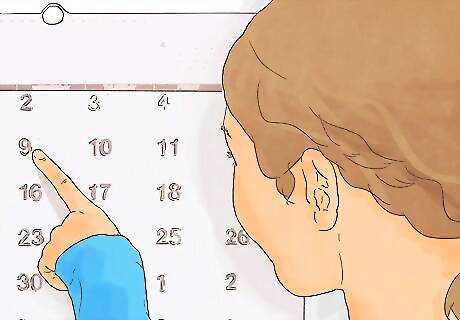
Schedule a hearing. You will need to schedule a hearing for the judge to consider your bail reduction. Each court handles scheduling a little differently. In some states, the clerk will automatically schedule a hearing date. In other courts, you will have to ask for the hearing date.
Attending Your Bail Hearing
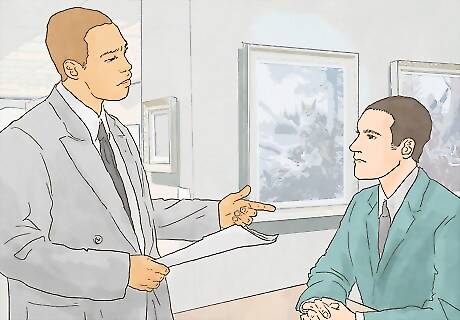
Weigh the pros and cons of testifying. At the hearing, you need to submit evidence in support of your argument. For example, you can submit pay stubs, letters, and tax records; however, you might also testify. Before agreeing to testify, you should weigh the pros and cons: You might testify if you can’t find documentary evidence to prove some point. For example, you might have lived in a community for 15 years; however, no one is available to testify to that fact, and you don’t have any documents which can prove it. In this situation, you might want to testify under oath because it could help you get a bail reduction. You might not want to testify because anything you say can be used against you. Because the prosecutor gets to cross-examine you, they might try to get you to slip up and admit to incriminating details about the crime. You probably shouldn’t testify if you can have other people testify to the important facts about why you are entitled to a bail reduction. In this situation, you don’t need to take the risk.
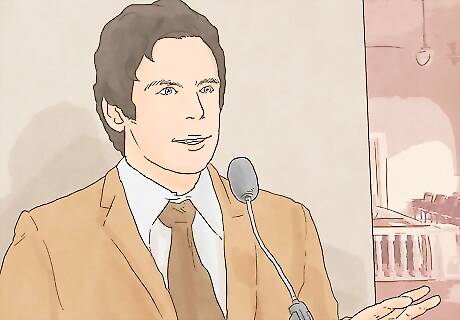
Make your argument to the judge. Your lawyer should handle everything at the bond hearing. All you will have to do is testify, if you choose to testify. Your lawyer will make the same argument that was made in the motion. If you have witnesses who want to testify, then your lawyer will ask them questions. The prosecutor can also cross-examine them.
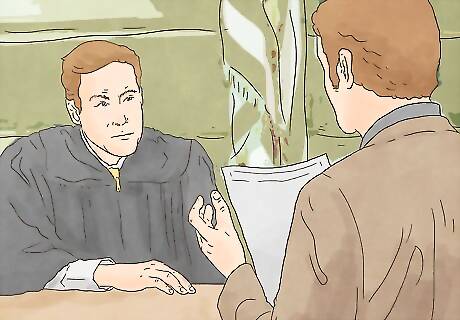
Testify on your own behalf. If you choose to testify, then you should review your testimony with your lawyer so that you will know what questions they will ask. When you get on the stand and testify, remember the following tips: Listen closely to the question. You don’t want to answer a question that wasn’t asked. If you don’t understand the question, then ask the lawyer to rephrase it. Answer only the question asked. It is important not to give away too much information at the bail hearing. Always tell the truth. After the prosecutor asks a question, give your attorney time to object. Don’t answer until the judge rules on the objection.
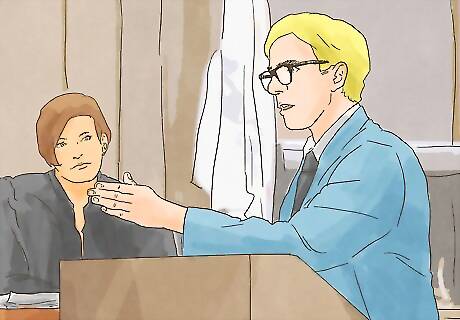
Listen to the prosecutor make an argument. The prosecutor gets to argue why your bail shouldn’t be reduced. The prosecutor will refer to the same factors that you did but will try to spin them in such a way that you appear like a flight risk. You can’t interrupt the prosecutor. Instead, you have to stand and quietly listen.

Receive the judge’s decision. The judge should make a decision shortly after all evidence has been presented. The judge might verbally discuss how they have balanced the factors for consideration. If you win, then you may be responsible for filling out the “order” form for the judge to sign. Ask if there are blank orders you can fill out.


















Comments
0 comment